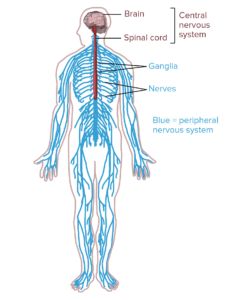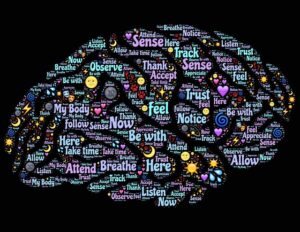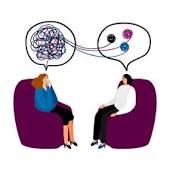neuroplasticity, brain plasticity, brain change, brain repair, brain injury, stroke, traumatic brain injury, Alzheimer’s disease, Parkinson’s disease, brain change, brain repair, brain injury, stroke, traumatic brain injury,
Neuroplasticity: The Brain’s Ability to Change and Heal

There are two main types of neuroplasticity: structural and functional. Structural neuroplasticity refers to the physical changes that occur in the brain when we learn or experience something new. For example, when we learn a new language, the brain creates new connections between neurons in the language-processing areas. Functional neuroplasticity refers to the changes in how the brain functions. For example, when we practice a skill, the brain becomes more efficient at performing that skill.
Neuroplasticity is a powerful tool that can help us to improve our brains and our lives. There are many things that we can do to promote neuroplasticity, such as Neuroplasticity is a fascinating and important concept. It is the brain’s ability to change and adapt that allows us to learn, grow, and recover from injury. By understanding neuroplasticity, we can take steps to improve our brains and our lives.
Understanding the concept of neuroplasticity—the brain’s ability to reorganize and rewire itself—breaks free from the old belief of fixed brain structure.
Neuroplasticity is the brain’s ability to change and adapt. This means that the brain can change its structure and function in response to experience. For example, if you learn a new skill, the brain will create new connections between neurons in the areas of the brain that are responsible for that skill. This process of neuroplasticity is what allows us to learn, grow, and recover from injury.

The brain’s ability to change and heal is a powerful thing. It means that we can never stop learning and growing. Even if we experience a brain injury, the brain can still recover and adapt. This is why it is so important to keep our brains active and engaged throughout our lives.
Here are some things that you can do to promote neuroplasticity and keep your brain healthy:
- Learn new things. This could be anything from learning a new language to taking a cooking class.
- Exercise. Exercise increases blood flow to the brain, which can help to promote neuroplasticity.
- Socialize. Social interaction helps to keep the brain healthy and promotes neuroplasticity.
- Challenge yourself. Try new things and step outside of your comfort zone.
- By following these tips, you can help to keep your brain healthy and promote neuroplasticity. This will help you to learn, grow, and recover from injury throughout your life.
Here is a more detailed explanation of the science behind neuroplasticity, including how neurons communicate and form connections, synaptic plasticity, structural plasticity, and neurogenesis:
How neurons communicate and form connections

Neurons are the basic building blocks of the brain. They are cells that send and receive signals. Neurons communicate with each other through synapses. Synapses are tiny gaps between neurons. When a neuron fires an electrical signal, it releases chemicals called neurotransmitters into the synapse. These neurotransmitters then bind to receptors on the next neuron, which causes that neuron to fire an electrical signal of its own.
Synaptic plasticity: Strengthening and weakening of neural connections
The strength of a synapse can change in response to experience. This is called synaptic plasticity. When a synapse is used frequently, it becomes stronger. This is because the neurons on either side of the synapse start to grow more receptors for the neurotransmitters that are released at that synapse. Stronger synapses are more likely to fire, which makes it easier for the brain to learn new things.
Structural plasticity: Rewiring the brain’s physical structure
The brain is not a fixed organ. It can change its physical structure in response to experience. This is called structural plasticity. Structural plasticity can involve the growth of new neurons, the formation of new synapses, and the pruning of unused synapses.
Neurogenesis: The birth of new neurons
The brain is not only capable of changing its structure, but it is also capable of generating new neurons. This process is called neurogenesis. Neurogenesis occurs primarily in the hippocampus, which is a region of the brain that is involved in learning and memory.
The importance of neuroplasticity
Neuroplasticity is essential for learning, memory, and recovery from injury. When we learn something new, the brain creates new connections between neurons. These new connections allow us to remember what we have learned. When we experience a brain injury, the brain can sometimes rewire itself to compensate for the damage. This is why it is often possible for people to recover from even severe brain injuries.
Neuroplasticity is a fascinating and important concept. It is the brain’s ability to change and adapt that allows us to learn, grow, and recover from injury. By understanding neuroplasticity, we can take steps to improve our brains and our lives.
The Role of Neuroplasticity in Learning and Memory
Neuroplasticity is the brain’s ability to change and adapt. This means that the brain can change its structure and function in response to experience. For example, if you learn a new skill, the brain will create new connections between neurons in the areas of the brain that are responsible for that skill. This process of neuroplasticity is what allows us to learn, grow, and recover from injury.
Learning is a complex process that involves the brain creating new connections between neurons. When we learn something new, the brain sends electrical signals through a network of neurons. These electrical signals cause the neurons to release chemicals called neurotransmitters. The neurotransmitters then bind to receptors on other neurons, which causes those neurons to fire electrical signals as well. The more often this network of neurons is activated, the stronger the connections between them become. This makes it easier for the brain to recall the information that we have learned.
Memory is the ability to store and recall information. Memories are stored in the brain as patterns of neural activity. When we remember something, the brain reactivates the same pattern of neural activity that was present when we first learned it. This reactivation of the neural activity allows us to recall the information that we have stored.
Neuroplasticity plays a critical role in both learning and memory. By creating new connections between neurons, the brain is able to learn new information and store it in memory. The more we use our brains, the more ceroplastic they become. This means that we can continue to learn and grow throughout our lives.
Factors Influencing Neuroplasticity
There are many factors that can influence neuroplasticity, including:
- Age: Neuroplasticity is greatest in early childhood and adolescence, but it can continue throughout adulthood.
- Experience: The more we use our brains, the more ceroplastic they become. This means that we can continue to learn and grow throughout our lives.
- Environment: The environment can also influence neuroplasticity. For example, people who live in stimulating environments with plenty of opportunities to learn and grow tend to have more ceroplastic brains.
- Genetics: Genetics also play a role in neuroplasticity. Some people are naturally more ceroplastic than others.
- Health: Good health is essential for neuroplasticity. Diseases such as Alzheimer’s disease and Parkinson’s disease can damage the brain and make it less neoplastic.
- Stress: Stress can impair neuroplasticity. When we are stressed, the brain releases hormones that can damage neurons and make it difficult for the brain to learn and grow.
- Drugs and alcohol: Drugs and alcohol can also impair neuroplasticity. These substances can damage neurons and make it difficult for the brain to learn and grow.
Harnessing Neuroplasticity for Personal Growth
Neuroplasticity is the brain’s ability to change and adapt. This means that the brain can change its structure and function in response to experience. This is good news for anyone who wants to improve their brain function and achieve personal growth.
There are many things you can do to harness neuroplasticity for personal growth. Here are a few ideas:
- Learn new things. Learning new things is one of the best ways to stimulate neuroplasticity. This can be anything from learning a new language to taking a cooking class.
- Exercise. Exercise is not only good for the body, but it is also good for the brain. Exercise helps to increase blood flow to the brain, which can promote neuroplasticity.
- Social interaction. Social interaction is another important factor in promoting neuroplasticity. When we interact with others, our brains release chemicals that help to promote learning and memory.
- Challenge yourself. Challenging yourself mentally and physically can help to keep your brain healthy and promote neuroplasticity. This could involve taking on new challenges at work or school or trying new activities in your free time.
- Get enough sleep. Sleep is essential for neuroplasticity. When we sleep, the brain consolidates memories and strengthens neural connections.
- Eat a healthy diet. A healthy diet provides the brain with the nutrients it needs to function properly.
- Manage stress. Stress can impair neuroplasticity. There are many things you can do to manage stress, such as exercise, relaxation techniques, and spending time with loved ones.
- Avoid drugs and alcohol. Drugs and alcohol can impair neuroplasticity. If you are struggling with addiction, there are many resources available to help you get help.
By following these tips, you can help to keep your brain healthy and promote neuroplasticity. This will help you to learn, grow, and remember throughout your life.
Here are some specific examples of how you can use neuroplasticity to achieve personal growth:
- If you want to improve your memory, try learning a new language or playing a musical instrument. These activities require you to use different parts of your brain, which can help to strengthen your memory.
- If you want to improve your problem-solving skills, try taking on new challenges at work or school. This will help you to develop new neural pathways and improve your ability to think critically.
- If you want to improve your creativity, try experimenting with different art forms or writing styles. This will help you to tap into your right brain and unleash your creativity.
No matter what your goals are, neuroplasticity can help you achieve them. By learning new things, exercising, challenging yourself, and taking care of your overall health, you can keep your brain healthy and promote neuroplasticity. This will help you to learn, grow, and remember throughout your life.
Neuroplasticity and Mental Health
Neuroplasticity is the brain’s ability to change and adapt in response to experience. This means that the brain can change its structure and function, which can lead to changes in behaviour and mental health.
There is growing evidence that neuroplasticity can play a role in the development and treatment of mental health conditions such as depression, anxiety, and post-traumatic stress disorder (PTSD). For example, studies have shown that people with depression often have reduced activity in the hippocampus, a brain region involved in memory and learning. Exercise and other activities that promote neuroplasticity can help to increase activity in the hippocampus and improve symptoms of depression.
Similarly, people with anxiety often have increased activity in the amygdala, a brain region involved in fear and anxiety. Mindfulness-based therapies, such as meditation, can help to reduce activity in the amygdala and improve symptoms of anxiety.
PTSD is a mental health condition that can develop after a person experiences a traumatic event. People with PTSD often have flashbacks, nightmares, and other symptoms that can interfere with their daily lives. Studies have shown that neuroplasticity-based treatments, such as cognitive-behavioural therapy (CBT), can help to reduce symptoms of PTSD.
Neuroplasticity is a promising area of research for the development of new treatments for mental health conditions. By understanding how the brain changes in response to experience, we can develop new therapies that can help people to improve their mental health and quality of life.
Here are some of the ways that neuroplasticity can be used to improve mental health:
- Exercise: Exercise is one of the best things you can do for your brain. It increases blood flow to the brain, which can help to promote neuroplasticity. Exercise can also help to reduce stress, which can improve mental health.

Close-up of a family running alongside the sea 
A mother does a virtual exercise class with her daughters in their living room. Part of the regular routine or the new normal with social distancing and Covid-19. -

A multi-ethnic group of adults are taking an exercise class together at the gym. They are working by cycling on stationary bikes. - Meditation: Meditation is a mind-body practice that can help to reduce stress and anxiety. It can also help to improve focus and concentration.

Meditation - Cognitive-behavioural therapy (CBT): CBT is a type of therapy that helps people to change the way they think about and react to their problems. CBT can help people to challenge negative thoughts and beliefs and to develop more helpful coping mechanisms.

CBT - Exposure therapy: Exposure therapy is a type of therapy that helps people to face their fears in a safe and controlled environment. This can help to reduce anxiety and improve quality of life.
-

Free Exposure Therapy
If you are struggling with a mental health condition, there are many things you can do to help yourself. Talk to your doctor about treatment options, and consider trying some of the activities listed above. With time and effort, you can improve your mental health and live a fulfilling life.
Summary of the article, highlighting the important salient points:
- Neuroplasticity is the brain’s ability to change and adapt in response to experience. This means that the brain can change its structure and function, which can lead to changes in behaviour and mental health.
- There is growing evidence that neuroplasticity can play a role in the development and treatment of mental health conditions such as depression, anxiety, and post-traumatic stress disorder (PTSD).
- Here are some of the ways that neuroplasticity can be used to improve mental health:
- Exercise: Exercise is one of the best things you can do for your brain. It increases blood flow to the brain, which can help to promote neuroplasticity. Exercise can also help to reduce stress, which can improve mental health.
- Cognitive-behavioural therapy (CBT) CBT is a type of therapy that helps people to change the way they think about and react to their problems. CBT can help people to challenge negative thoughts and beliefs and to develop more helpful coping mechanisms
-
- Meditation: Meditation is a mind-body practice that can help to reduce stress and anxiety. It can also help to improve focus and concentration.
- Exposure therapy: Exposure therapy is a type of therapy that helps people to face their fears in a safe and controlled environment. This can help to reduce anxiety and improve quality of life.
If you are struggling with a mental health condition, there are many things you can do to help yourself. Talk to your doctor about treatment options, and consider trying some of the activities listed above. With time and effort, you can improve your mental health and live a fulfilling life.
Here are some additional important points from the article:
- Neuroplasticity is a lifelong process. The brain is constantly changing and adapting, even in adulthood. This means that it is never too late to improve your mental health by promoting neuroplasticity.
- There are many different ways to promote neuroplasticity. The activities listed above are just a few examples. There are many other things you can do to promote neuroplasticity, such as learning new things, socializing, and getting enough sleep.
- Neuroplasticity is a promising area of research. Scientists are still learning about how the brain changes in response to experience. As we learn more about neuroplasticity, we will develop new and better treatments for mental health conditions.



Ho letto articolò
Miha dato piu informazioni
Thanks